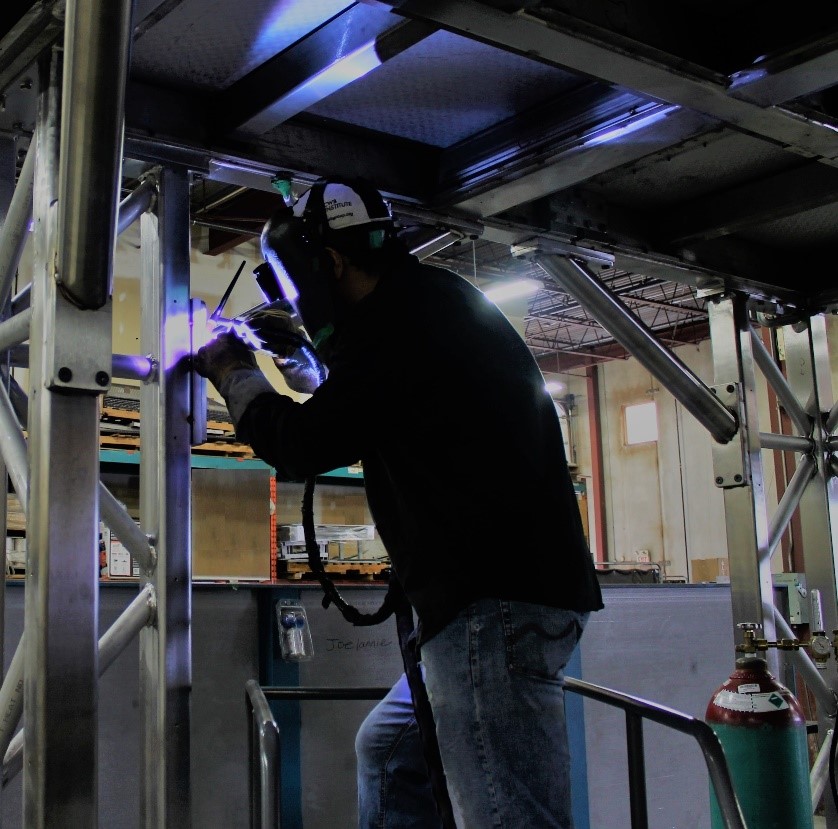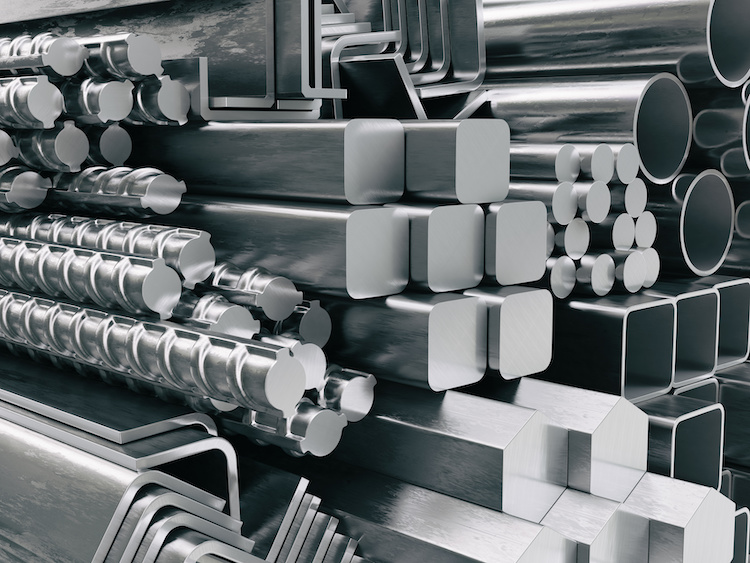Comprehensive Evaluation of Cutting-Edge Techniques in Steel Construction Industry
As the steel manufacture market continues to progress, the integration of sophisticated methods has ended up being important for remaining competitive and meeting the demands of modern production standards. From laser cutting improvements to the usage of robotics and 3D printing in steel manufacturing, the landscape of fabrication strategies is quickly changing. With each development bringing its very own set of challenges and benefits, an extensive evaluation of these techniques is paramount for companies aiming to improve their processes, enhance accuracy, and eventually, raise the quality of their steel manufacture result. In this vibrant sector where innovation plays a crucial function, understanding the nuances of these sophisticated methods is not simply an alternative however a requirement for those wanting to advance in the ever-evolving globe of steel fabrication.
Laser Cutting Advancements
In the world of steel manufacture, laser cutting developments have actually revolutionized the accuracy and performance of metal shaping procedures. By taking advantage of the power of concentrated laser beam of lights, producers can currently achieve exceptional degrees of accuracy when reducing through different kinds of steels. This modern technology enables complex layouts to be executed with minimal product waste, making it an affordable solution for industries needing high accuracy parts.
One of the crucial advantages of laser cutting is its capacity to manage a wide range of materials, consisting of stainless-steel, light weight aluminum, and carbon steel, with simplicity. The procedure creates clean, burr-free edges, getting rid of the requirement for added finishing actions. The non-contact nature of laser cutting lowers the danger of product contamination, resulting in higher high quality end products.
Additionally, laser cutting machines can be configured to make swift, specific cuts, considerably reducing production time contrasted to conventional reducing approaches. This rate and accuracy make laser reducing particularly appropriate for automation atmospheres where performance is critical. As modern technology remains to advance, laser cutting is poised to play a progressively important role in the steel construction sector.

CNC Machining Innovations
The evolution of CNC machining technologies has ushered in a brand-new era of precision and effectiveness in the steel manufacture sector. Computer System Numerical Control (CNC) makers have changed steel manufacture by using unparalleled accuracy and repeatability in the manufacturing process. steel fabrication melbourne. Among the vital advancements in CNC machining is the assimilation of advanced software systems that enable real-time tracking and changes, bring about boosted productivity and quality assurance
In addition, the development of multi-axis CNC equipments has permitted the fabrication of complex steel elements with complex designs that were previously testing to generate. These devices can do a wide variety of machining operations, including milling, exploration, transforming, and grinding, all with high levels of precision.
In addition, the incorporation of automation and robotics in CNC machining has structured production processes, lowered lead times, and minimized the margin of error. This combination of sophisticated modern technologies not just enhances performance yet likewise ensures consistent top quality across all fabricated steel components. In conclusion, CNC machining technologies continue to drive improvements in the steel fabrication market, setting new criteria Alpha reo for accuracy and performance.
Automated Welding Technologies
Automated welding technologies have revolutionized the steel construction industry, boosting effectiveness and precision in the welding procedure. These cutting-edge innovations make use of computer-controlled systems to automate the welding process, leading to higher efficiency degrees and enhanced weld top quality. One of the essential advantages of automated welding is the capability to execute intricate welds with regular accuracy, minimizing the possibility of errors and remodel.
Robotic welding systems are at the forefront of automated welding innovations, providing exceptional speed and precision. These systems can manage a vast array of welding jobs, from easy to detailed, easily (metal fabrication melbourne). By utilizing innovative sensing units and software application, robotic welders can adapt to variations in product and joint geometry, ensuring an uniform and trustworthy weld
In addition, automated welding innovations boost office safety by minimizing the direct exposure of human welders to hazardous fumes and intense warm. As the steel construction market remains to progress, incorporating automated welding innovations will be crucial for companies wanting to remain competitive and satisfy the expanding needs for premium bonded items.
Robotics Integration in Manufacture
Using robot systems in fabrication processes has become a pivotal technique for boosting effectiveness and precision in contemporary production atmospheres. Robotics integration in steel fabrication uses a myriad of advantages, including boosted performance, boosted quality control, and boosted precaution. These innovative robotic systems are furnished with advanced sensors and programming capacities, enabling them to do intricate tasks with a high level of precision and repeatability.
One of the crucial advantages of robotics combination in steel fabrication is the capacity to automate recurring jobs, such as material handling, cutting, welding, and assembly procedures. This not just speeds up production cycles but likewise minimizes the risk of human mistake, causing greater general product high quality. Furthermore, robotics can run 24/7, dramatically increasing production result and conference tight task due dates.

3D Printing in Steel Production
Having actually transformed the steel construction market via robotics assimilation, the burgeoning expedition of 3D printing in steel manufacturing is positioned to more advance the realm of modern-day manufacturing methods. 3D printing, likewise referred to as additive manufacturing, uses unmatched layout freedom and complexity, enabling the production of detailed steel structures that were previously unattainable through traditional manufacturing techniques. By utilizing computer-aided style (CAD) software application, makers can precisely regulate the layer-by-layer deposition of steel product, resulting in get rid of boosted geometries and functionalities.
Among the vital advantages of 3D printing in steel production is its capacity to minimize material waste substantially. Unlike subtractive manufacturing procedures where excess product is trimmed away, 3D printing only uses the necessary quantity of steel needed for the final part. This efficiency not just brings about cost financial savings however likewise lines up with lasting production practices by reducing ecological influence.
Furthermore, 3D printing allows quick prototyping and personalization, enabling the production of little sets of complex steel elements with brief lead times. As the technology remains to grow and become more available, its combination right into mainstream steel manufacture processes is anticipated to drive technology and performance across the sector.
Conclusion
To conclude, the steel manufacture sector has seen significant improvements in techniques such as laser cutting, CNC machining, automated welding, robotics combination, and 3D printing. These innovative technologies have transformed the way steel products are made, bring about increased cost-effectiveness, accuracy, and effectiveness. Proceeded investment in these innovative strategies is crucial for the sector to stay affordable and satisfy the demands of contemporary manufacturing processes.
As the steel construction industry proceeds to evolve, the combination of innovative techniques has actually come to be necessary for remaining affordable and satisfying the demands of modern-day production requirements.One of the crucial advantages of laser cutting is its capability to manage a wide range of materials, including stainless steel, aluminum, and carbon steel, with simplicity.Automated welding modern technologies have transformed the steel fabrication sector, enhancing performance and accuracy in the welding process.Having reinvented the steel manufacture sector with robotics integration, the blossoming exploration of 3D printing in steel manufacturing is poised to further advancement the realm of modern-day production techniques.In final thought, the steel construction sector has actually seen considerable developments in techniques such as laser cutting, CNC machining, automated welding, robotics integration, and 3D printing.